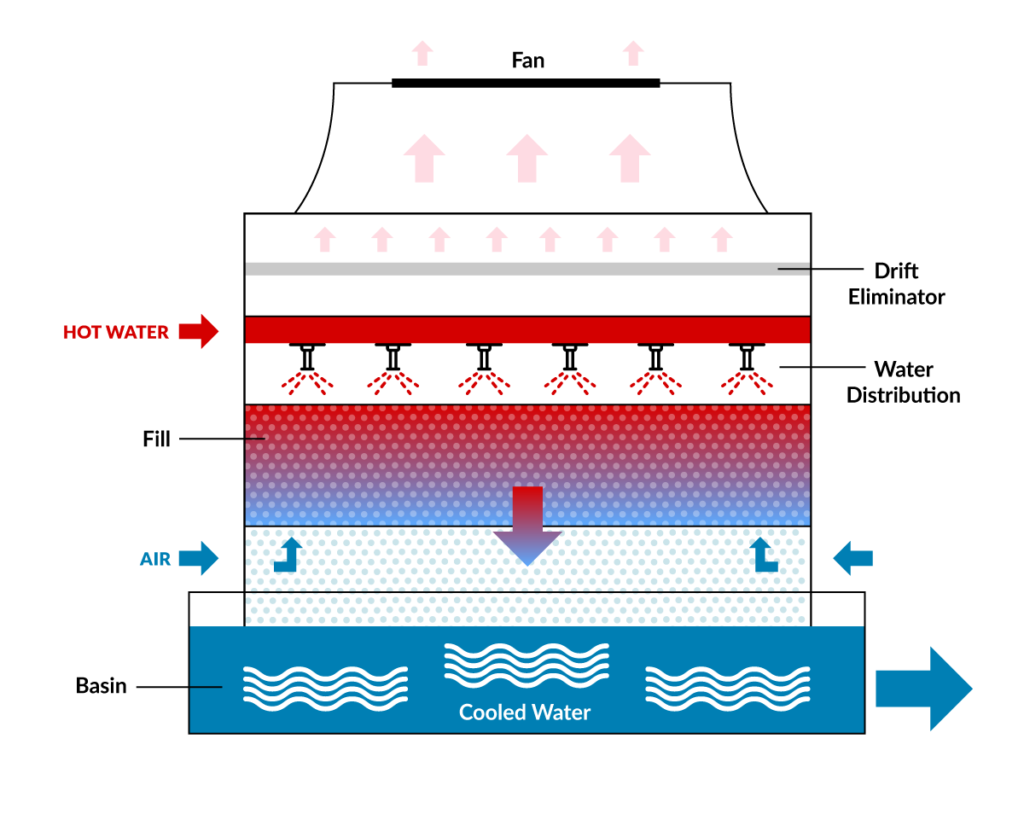Where to Test for Legionella in Cooling Towers?
 Cooling towers are used in many commercial buildings and industrial facilities to cool water that is used in heating, ventilation, and air conditioning (HVAC) systems. The water in a cooling tower is warm and exposed to air, and as a result, Legionella bacteria can grow and multiply quickly as well as get heavily distributed. Legionella is a type of bacteria that can grow in water systems and can cause a severe respiratory disease called Legionnaires’ disease. Cooling towers are one of the primary sources of Legionella outbreaks, so it is essential to test for Legionella in cooling towers regularly.
Cooling towers are used in many commercial buildings and industrial facilities to cool water that is used in heating, ventilation, and air conditioning (HVAC) systems. The water in a cooling tower is warm and exposed to air, and as a result, Legionella bacteria can grow and multiply quickly as well as get heavily distributed. Legionella is a type of bacteria that can grow in water systems and can cause a severe respiratory disease called Legionnaires’ disease. Cooling towers are one of the primary sources of Legionella outbreaks, so it is essential to test for Legionella in cooling towers regularly.
Where should testing for Legionella be done in cooling towers? Below is a general guideline of key areas in cooling towers where Legionella testing should be conducted. It is important to note that this list may not be comprehensive nor applicable to your particular facility and cooling tower design, so it is important to contact an experienced Legionella testing consultant for independent consulting advice. A Legionella risk assessment may be needed to determine the best Legionella testing approach as part of a Legionella management plan. See an overview of Legionella control systems that can be used with cooling towers.

Testing for Legionella should be conducted in the following areas of a cooling tower:
- Cooling tower basin: The basin is the primary storage area for the water in the cooling tower. This is the area where the water is exposed to the most air and is most likely to contain Legionella bacteria. The basin should be tested at least twice a year for Legionella.
- Cooling tower drift eliminators: Drift eliminators are designed to prevent water from leaving the cooling tower in the form of mist or aerosol. If the drift eliminators are not working correctly, Legionella bacteria can be released into the air. It is essential to test the drift eliminators regularly to ensure that they are working correctly.
- Cooling tower fill material: The fill material is the material used to increase the surface area of the water in the cooling tower. The fill material is also an area where Legionella bacteria and biofilm grow. Testing the fill material for Legionella should be done at least once a year.
- Cooling tower water distribution system: The water distribution system is the system that distributes the water throughout the cooling tower. This system can also be a source of Legionella bacteria. It is essential to test the water distribution system regularly to ensure that it is not contaminated with Legionella.
- Air surrounding the cooling tower: Legionella bacteria can be released into the air in the form of mist or aerosol. Testing the air surrounding the cooling tower can help identify areas where Legionella bacteria may be escaping.
In addition to regular Legionella testing, it is essential to have a Legionella management plan in place. A Legionella management plan should include regular testing, as well as measures to prevent Legionella growth.
If Legionella is detected during testing, Legionella remediation is needed. There are several options for Legionella control, so contact Legionella Control Systems immediately to determine the Legionella remediation that is best for your facility and budget. It can be difficult to kill Legionella, so it is important to work with a Legionella expert.







